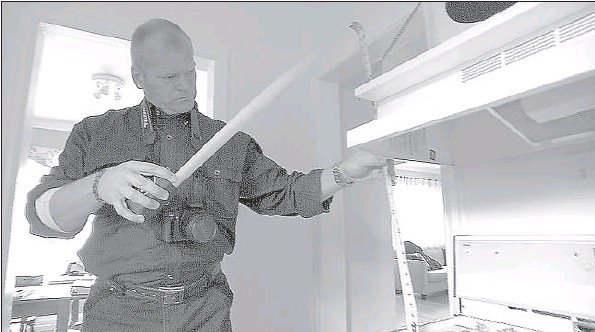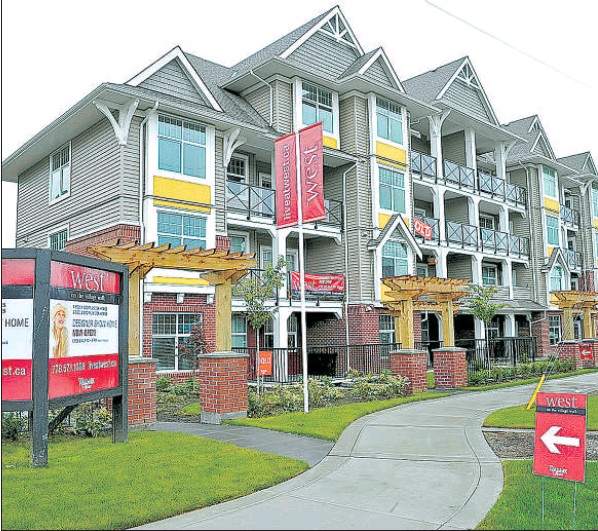Only 47 landlords planning to provide accommodation for 2010 Games applied
Kim Pemberton
Sun

Brenda Matthews inside her trendy downtown Vancouver condo, where she figures she doesn’t need the Olympic-sized hassle and is planning on renting out her condo, near Vancouver’s Tinsel town and living with her daughter. Photograph by: Mark Van Manen, Vancouver Sun
With only months to go before Vancouver hosts the 2010 Winter Olympics, the number of homeowners willing to rent out their properties is reaching an all-time high, but the vast majority are not doing it legally.
Vancouver, Whistler and West Vancouver have enacted bylaws to allow temporary rental accommodation in private homes, but so far only 47 homeowners have applied for a licence in Vancouver, 21 in Whistler and four in West Vancouver. The licence fee in Vancouver is $106, in Whistler it is $300 and in West Vancouver the cost is $150.
In Vancouver, failure to get a licence could result in a maximum penalty of $2,000, but Celine Mauboules, housing policy planner with the city, says the city would enforce the bylaw only if there was a specific complaint.
“We wouldn’t start there [with the fine]. We’d send a letter, ‘this has come to our attention,’ and ask that they apply. If that doesn’t work we’d send an inspector to do further investigation, or do an injunction to prevent them from renting.”
She adds that ultimately homeowners could be at risk of possible legal ramifications if they are unable to complete their rental agreements with visitors.
Tourism, Culture and the Arts Minister Kevin Krueger says he was surprised to learn from a reporter that the number of homeowners applying for a business licence was so low.
“It’s a new wrinkle to work on,” Krueger said. “Maybe it’s time to do some regional advertising.
“People should be complying with the bylaw. They may not be aware, so we’ll be talking to the city and make sure there isn’t that disconnect.”
Krueger said the goal is to ensure the expected 350,000 visitors actively involved in the Games will have accommodation and, while athletes, coaches and others in the “Olympic Family” have had their accommodation needs met, the goal now is to increase the inventory of housing for spectators.
“A lot of the traditional accommodations [are] booked. Vancouver city council did a very progressive move in creating a bylaw that allows for temporary accommodations. It’s added a lot of potential inventory to the market,” Krueger said.
He said there are 1,949 private apartments or houses that have a total of 5,062 rooms listed with one Olympic website, www.rent2010.net, along with 2,100 hotel, motel and bed and breakfast rooms for some periods during the Games, 885 cruise-ship staterooms and 388 RV campsites.
Breakaway Vacations and EMR Vacation Rentals, housing rental agencies featured on the official Tourism Vancouver destination planning site for the Games, have contracted with hundreds of homeowners to rent their homes during the Games and their contracts specifically state they must comply with local bylaws.
Breakaway Vacations has promised its Vancouver clients it will take on the responsibility of obtaining the necessary licences from the city, but is waiting to apply until the bookings are confirmed and paid.
“Once we have a rental that is going to go through, then our company will be purchasing the licence on their behalf,” Breakaway Vacations spokesman Brad Hama said. “We have the forms on hand. We just want to make sure we have the payments in, then we’ll take care of [the licence requirement].”
The company now has 63 Olympic properties on its website and says demand from homeowners who want to rent out space is so high that more are being turned away than are being taken on.
“Right now we’re just taking on full units or suites. Quite a few people are wanting to rent out a bedroom,” Hama said.
He said the number of homeowners coming forward has doubled since summer. “The majority have put it off and left it to the last minute, but are seeing the publicity of the Olympics and seeing the opportunity.”
Hama said the going rate for a one-bedroom downtown condo is $500 a night.
Brenda Matthews plans to rent out her condo in downtown Vancouver and stay with her daughter, primarily to avoid traffic congestion and security concerns during the Games. She is renting her home out for a two-week period, for the discounted price of $350 per night because the renters are staying for the duration.
“I know I have to have a licence and they [Breakaway Vacations] discussed that with me. That was another bonus [with going with a rental agency], not having to deal with that,” she said.
Breakaway Vacations charges a set-up fee of $150 to $300, depending on the size of the home, plus 27.5 per cent of the rent collected. The price includes the collection of the GST and hotel sales tax, pre-screening visitors, handing over the keys and doing the cleanup.
EMR Vacation Rentals has already made about 300 Olympic bookings and has another 400 properties listed, most of them in Vancouver, guest services manager Blake MacKenzie said.
EMR is restricting its new listings to homeowners in downtown Vancouver and on the west side, but as bookings increase, will consider other areas.
MacKenzie said the company informs everyone who lists with it that they must comply with city bylaws.
“The problem is, the city put this out there after the fact. They should have said this two years ago,” MacKenzie said.
“There are thousands of people listing out there. I know one company has 1,400 listings…. The city needs to get the message out. I haven’t seen any advertising by them.”
MacKenzie said EMR agents advise condo clients they must ensure they are not breaking any strata rules by renting during the Games.
“We’ve seen a marked increase as we get closer to the Games of people wanting to rent and people wanting accommodation. We’ve doubled the bookings since the summer.”
MacKenzie said the demand is primarily for downtown Vancouver, with North Shore properties the toughest to rent out during the Games because clients are concerned about taking too many buses to get into the city.
MacKenzie said homeowners from as far away as Hope, Chilliwack, Vancouver Island, the Okanagan and Lynden, Wash. have contacted the agency wanting to list. The agency takes a 25-per-cent commission and a $250 listing fee for a full-service rental, which includes vetting the guests, tax collection, housekeeping and handing over the keys. It is keeping homeowners from cities such as Burnaby and New Westminster on a reserve list and will list them if the demand is there.
Krueger believes that day will soon come.
© Copyright (c) The Vancouver Sun
















